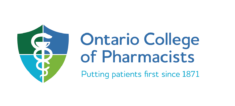Five Ways The Ontario College of Pharmacists Works to Assure the Quality of Your Pharmacy Care

SPONSORED CONTENT
Which type of healthcare professional do you see the most? It’s probably not a doctor or nurse. For most people, it’s likely a pharmacist.
Like many health professionals, pharmacists and pharmacy technicians need to be registered to practice in Ontario. As the organization that licenses them, the Ontario College of Pharmacists aims to protect the public interest by promoting quality and safe pharmacy care.
The College is the regulating body for approximately 17,000 pharmacists, and another 5,000 pharmacy technicians. The College also regulates the province’s community and hospital pharmacies. How does the College protect your interests, health and well-being as a pharmacy patient? Here are some of the ways we do this.
1. Setting the standard
The College develops practice policies, standards and guidelines, including a Code of Ethics, and enforces these along with relevant legislation and regulations that pharmacists and pharmacy technicians must follow in order to practice in Ontario. Adhering to them helps pharmacy professionals support your best possible health outcomes.
2. Authorization to practice
The professionals behind the pharmacy counter have been highly trained before being granted the right to practice in Ontario.
Pharmacists must have university-level pharmacy education before registering to practice. They’re specially trained in dispensing prescription and non-prescription medications, drug therapy, understanding drug interactions and side effects, and advising patients on their health and medications. Pharmacy technicians have to complete their own accredited education program, including training in various aspects of handling and dispensing medications.
In addition to their training, both types of professionals must pass provincial and national exams on pharmacy practice, laws and standards.
All pharmacists and pharmacy technicians in Ontario must be registered with the College and only professionals who have met all of the requirements are granted registration in order to practice.
3. Maintaining quality
To stay registered, pharmacists and pharmacy technicians must commit to ongoing learning throughout their careers. As well, every year pharmacists and pharmacy technicians are randomly selected to complete a self-assessment.
Continually improving, year after year, contributes to better and safer pharmacy care. That’s a big part of protecting you as a member of the public.
4. Coaching to enhance care
How can you trust that pharmacy professionals apply the best processes and approaches? That’s part of their training, but the College also provides coaching for pharmacists and pharmacy technicians. It happens through what are called practice assessments.
Experienced pharmacy professionals employed by the College, called practice advisors, connect with pharmacists and pharmacy technicians to review and discuss things such as decision-making, communication and education with patients, record-keeping, patient assessments and (for the pharmacy technicians) patient care support activities.
The assessments, and the feedback on potential opportunities to improve, help ensure that pharmacists and pharmacy technicians are meeting the highest quality standards. That’s important for strengthening your confidence in the care you receive.
5. Addressing complaints
The College takes all complaints and concerns regarding the conduct, safety or quality of pharmacies and regulated pharmacy professionals seriously. As part of its legislated duty as a health profession regulator, the College has a process in place to investigate and take the appropriate action in the best interests of the public.
To learn more about the role of the Ontario College of Pharmacists, visit the College’s website at www.ocpinfo.com.
